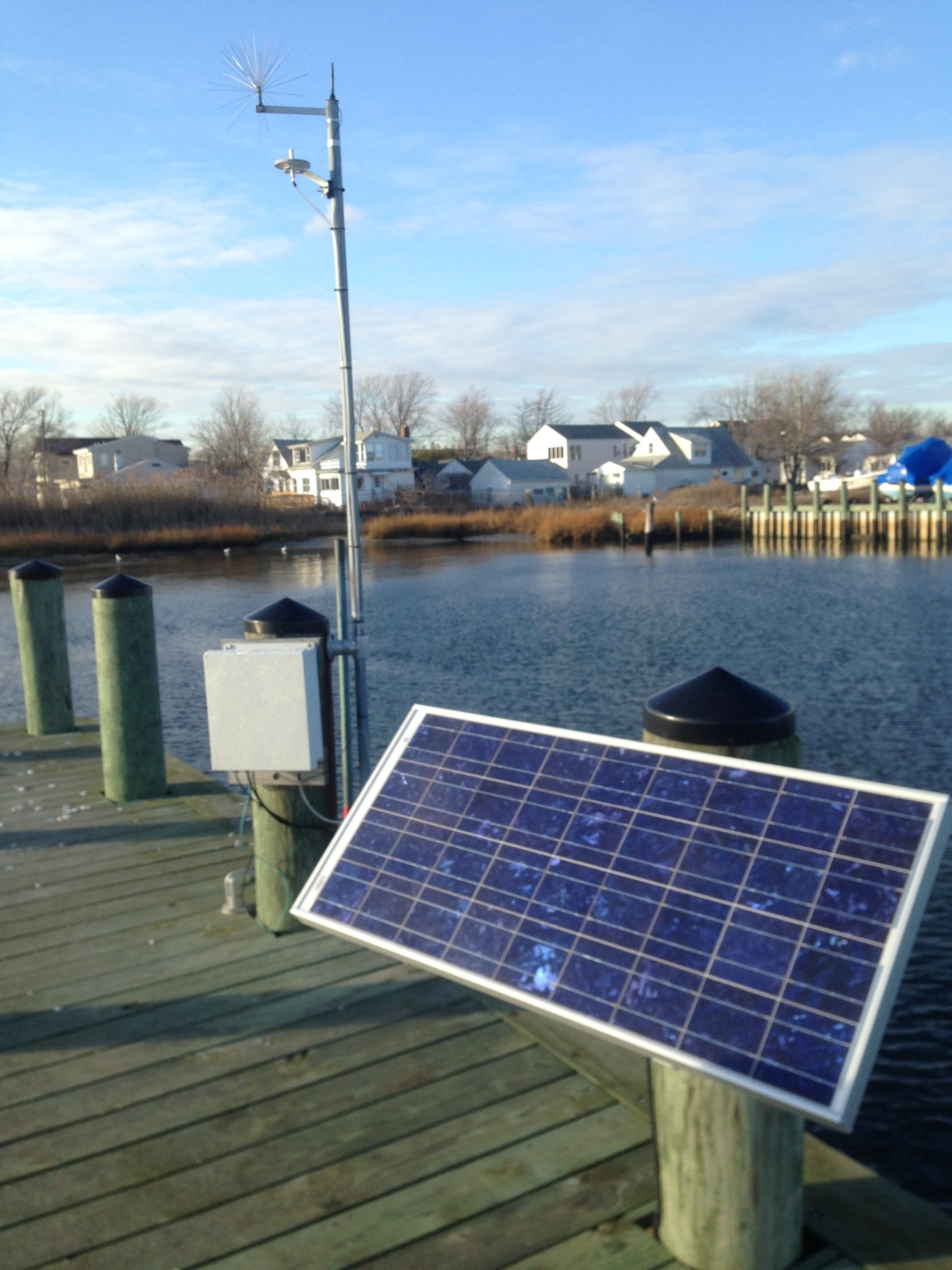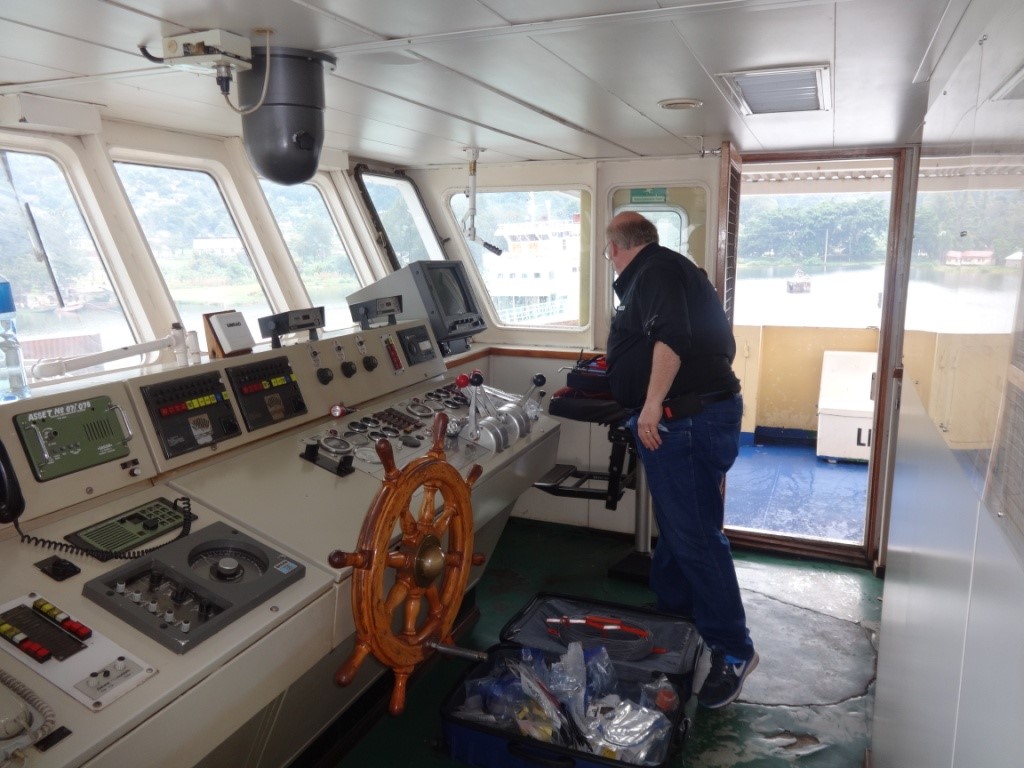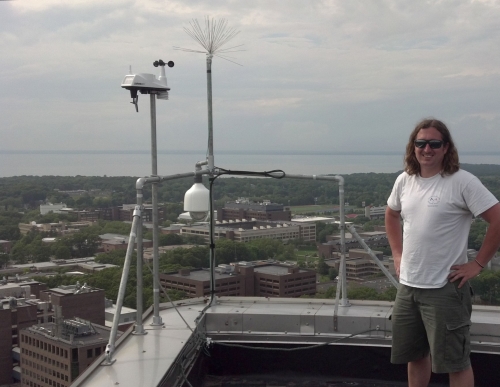The EShop designs and constructs custom equipment and instrumentation to meet needs not filled by commercially available devices. Our capabilities include:
- Electronic circuit design
- Microcontroller programming
- Real time field instrumentation.
- Machining
- Pressure case design and fabrication
- Welding
- Refrigeration (EPA certified)
- Carpentry and fiberglass
Areas of special expertise include: Argos and Iridium satellite telemetry, 3G/4G cellular telemetry,. GPS positioning, oceanographic and meteorological instrumentation including high precision conductivity and temperature measurement, IP camera systems, and micropower electronics.
Great South Bay Buoy
The Great South Bay Buoy, designed, built, and maintained by the EShop, has provided real time meteorological and hydrographic observations since 2008 from a deployment south of West Sayville NY at 40o 41.6’N, 73o 05.1’W. This buoy reports wind speed and direction, air temperature and humidity, photosynthetically active radiation (PAR), water temperature and salinity, chlorophyll-a fluorescence and turbidity.
Great South Bay Buoy #1 data is broadcast to the National Data Buoy Center at Station 44069
SoMAS Vortex Debubbler
The SoMAS Vortex Debubbler, developed by Tom Wilson and former Instrument Technician Henry Harrison at the EShop in the 1980s, dramatically improves the accuracy of high precision oceanographic instruments that measure salinity and fluorescence by extracting microbubbles from the input flow. Sea Bird Electronics, the premier manufacturer of oceanographic instrumentation, lists the Vortex Debubbler on their website as a recommended accessory for their thermosalinographs. The EShop has supplied nearly 200 debubblers to research vessels operating around the world (including Scripps Institution of Oceanography’s new ocean class research vessel, the R/V Sally Ride), resulting in a not inconsiderable contribution to the quality of global surface salinity and fluorescence data.
LIShore
LIShore(pronounced “Ell Eye Shore”) is a Coastal Observing System operated by the EShop. Founded in 1998, LIShore has expanded from an initial focus on Shinnecock Inlet and Shinnecock Bay to monitor sea and shoreline conditions at locations around Long Island, New York. LIShore provides free real-time and archived information through a website at www.LIShore.org
LIShore provides “one stop” access to sea and shoreline conditions including weather, tide/surge, water temperature, salinity, waves, currents, and shoreline cameras. Information includes real time data from instruments currently deployed at eleven locations and a historical archive from nineteen locations comprising 2.3GB of data and over 1.3 million time-lapse images. Some instruments are native to LIShore; other data is mirrored from cooperating partners and public data sources.
Radar Yard
EShop personnel prepared specifications for fencing, gates, and electrical power for the site, coordinated with Campus Facilities during construction, organized delivery and installation of KaSPR weather radar (housed in a 20 foot cargo container), and installed and maintain secondary instrument systems.
In March 2017, a state-of-the-art Ka-band Scanning Polarimetric Radar (KASPR) was delivered to the Stony Brook University (SBU) South P Lot. Prof. Pavlos Kollias from the School of Marine and Atmospheric Sciences provided funding to Prosensing to refurbish, upgrade and test the KASPR and has agreed with Prosensing on a long-term service and loan agreement. The KASPR was installed in a secured area in the South P Lot that was recently established using funds from the SBU Provost’s Office. The radar yard in the South P Lot is expected to host and support the operation of several radars, lidars and other remote sensors that have been arrive at SBU before the summer of 2017. The KASPR is the most sophisticated cloud radar ever build and the first of its kind in a US University. The KASPR will collect unique observations in clouds and precipitation and is expected to push our frontiers in basic knowledge in ice/snow microphysics and warm clouds lifecycle.
M/V Serengeti instrument install
As part of the HyCRISTAL project, EShop personnel installed an automated weather and water temperature system aboard a ship of opportunity crossing Lake Victoria in East Africa.
“Top of the Brook”
Weather station and camera located on the top of Stony Brook University’s Health Science Center, the highest point on Long Island.
The weather station on the Health Sciences Center was a collaborative effort between the Health Sciences Center, the School of Marine and Atmospheric Sciences and the Stony Brook Meteorology Club. Initial discussions and planning began in April 2012 and the equipment was installed in June 2013. In addition to the weather station, a Pan-Tilt-Zoom webcam aimed at the Main Campus of Stony Brook University and the Long Island Sound is also installed.
Lightboard
The EShop built this “chalkboard pumped full of light” for Teaching, Learning, and Technology’s One Button Studio, allowing lecturers to record presentations and write on a board while facing the audience.
PloverCAM
Build to assist wildlife researchers in managing endangered populations of Piping Plover, the PloverCAM combines a high resolution pan/tilt/zoom IP camera with IR spotlight illumination, a solar power system, 4G wireless internet telemetry, and land side server recording to allow researcher to monitoring nesting sites 24 hours per day.










